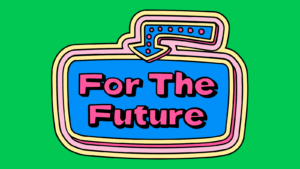By John Allan
Scenario
I teach in a mixed gender technical college in the Middle East. The majority of students are in their twenties pursuing engineering, business, information technology, health sciences and technician certification. In mid-term, I was transferred to teach a blended preparatory course, that is, the students were required to attend face-to-face lectures and labs while accessing their assessments and resources from the college learning management system (LMS).
The students progressed through the modules diligently accomplishing tasks and assessments. On the surface everything was going well. These first-year students were required to attend theatre lectures, work in groups, access resources from an LMS, receive feedback on assignments remotely and acquire content from digital videos, notes and surveys. As an instructor, I felt the course could be improved by making the course delivery more engaging through enriched intentional support.
The following term, I implemented practices to enhance the learning process for the students and improve the instructor’s facilitation of this blended course. Some worked well and others were redesigned or discarded. The following are practices I found helped students adapt to the blended learning course. These worked in my particular class, they may have to be adapted to work for your situation.
Enhancing blended learning practices.
“How To” task sheets
Too often, I review courses that require students to use a digital application to complete an assignment but nowhere in the course is there time allotted or a resource to allow students to learn the application. A common example of this is assigning students to creating a Mind Map on a specific topic.
A misconception is that younger people are adept at all technologies. This is far from the truth. Students who are strong with technology quickly move through the assignment. However, there are others in the class that require direct instruction on using the tool.
These students must spend additional time learning a new application or plunging into a gift economy with the promise of a returned favour in the future. In this blended course, I created a “How To” sheet for any technology that the students were required to complete an assignment or a project.
The availability of “How To” sheets, listed below, evens the playing field for all involved in the class. This also includes instructors in other course sections across the college.
- Create a Winksite mobile website
- Create an infographic with Canva
- Scan a document to email
- Upload Images on a Webserver for a Permanent Link
- Make a mind map with Mindmeister
- Create a QR code
- Make a Quizlet study set
- How to segment videos with Vibby
- Exploring MOOCS
- Set up your personal profile on the LMS
- Generate citations with the citation machine
- Calculate (forecast) your GPA with the GPA calculator
- How to add your schedule to your calendar
- Using the libraries’ digital resources and services
- Upload and share ePortfolio artifacts
Linguistic support
In colleges across the globe, students require linguistic support as their native language may not be the instructional language. As well, acronyms, cultural references and technical terms are often unfamiliar to all students in a course. To provide additional support, I generated Quizlet study sets for each module.
Quizlet provides eight learning events, three games and 5 learning activities, for each word list. In addition, Quizlet Live, provided cooperative and competitive gamification events for each module. Learners often commented that they were using the Quizlet app on their mobile devices to study off campus.
Face-to-face support
In a blended course, the instructor has the option of assessing using LMS tools and returning the graded and marked up documents back to the students via the LMS. It would be easy to concede responsibility to the online component of the course.
However, students performed better with their responsibilities when the expectations were communicated and reiterated in the face-to-face sessions. Key to this was instructor review of tasks and assignments before submission to the LMS. This necessitated running shoes for the teacher, however, it provided instant clarification and direction for students as they worked on their tasks.
Task exemplars
To ensure that the learners completely understood the expectations of an assessment, I generated assignment exemplars. These models did not contain the assignment or project content, but demonstrated the expected standards and scope of tasks. An example of this is a web page final project.
Students were provided with a complete final project with the topic, Niagara Falls Tourism. Learners were able to experience the project’s media, navigation, structure and quality to set targets for their own projects and transfer these expectations to their personal web pages.
Rubrics
Adhering to my instructional design training, I reviewed existing course rubrics and refined them to suit the current cohort requirements and ensured that they aligned with the course outcomes. As courses age, patchwork fixes appear in course resources and assessments. Rubrics also are altered as instructors change these to suit their current requirements. It is difficult to get a group of instructors to totally agree on a rubric.
For this course, I printed all of the rubrics and reformatted them to provide a consistent design and function. Face value carries weight toward respecting a rubric. When the rubrics were presented to the students as the assignments were detailed, they could identify with each rubric as a standard expectation for the course.
Ensuring that learners were exposed to the assignment rubric I taught them to seek out and understand grading schemes for college assignments in the future. I feel, assisted many students with achieving success in the course.
Improved remote resources
While facilitating the course, I evaluated third party resources based on content, user-friendliness, face value, and task compatibility. If these resources were in need of improvement, I searched for more relevant resources.
A few of the resources identified and inserted into the course were:
- Vibby for online video editing.
- H5P for generating assessable learning objects.
- Edpuzzle for creating online video quizzes.
- Quizlet Live for classroom gamification.
- Imgur for creating an online image link.
- Canva for creating an infographic.
- Mindmeister for creating a mind map.
- Student-Generated Study widgets
To provide learners with an additional means of improving their academic careers, I encouraged them to take charge of their learning. Students were provided with contemporary tools to form possible study aids for any challenges that they may face as their college careers progress.
These tools included Vibby, EdPuzzle and Quizlet. Vibby is a practical way for learners to parse video into comprehensible chunks. Quizlet is a vocabulary learning application and EdPuzzle allow students to make quizzes that are associated with an online video.
Final Thoughts
Working with this blended course was a stimulating experience, but I feel that the learners and I are richer for the hard work it involved. I hope that some of these suggestion will make your blended learning teaching more efficient and rewarding. If you have any additional comment or ideas, please share them in the comments section below.
Resource Links
- Create a Winksite mobile website
- Create an infographic with Canva
- Scan a document to email
- Upload Images on a Web server for a Permanent Link
- Make a mind map with Mindmeister
- Create a QR code
- Make a Quizlet study set
- How to segment videos with Vibby
- Exploring MOOCS
- Vibby for online video editing.
- H5P for generating assessable learning objects.
- Edpuzzle for creating online video quizzes.
- Quizlet Live for classroom gamification.
- Imgur for creating an online image link.
- Canva for creating an infographic.
- Mindmeister for creating a mind map.




